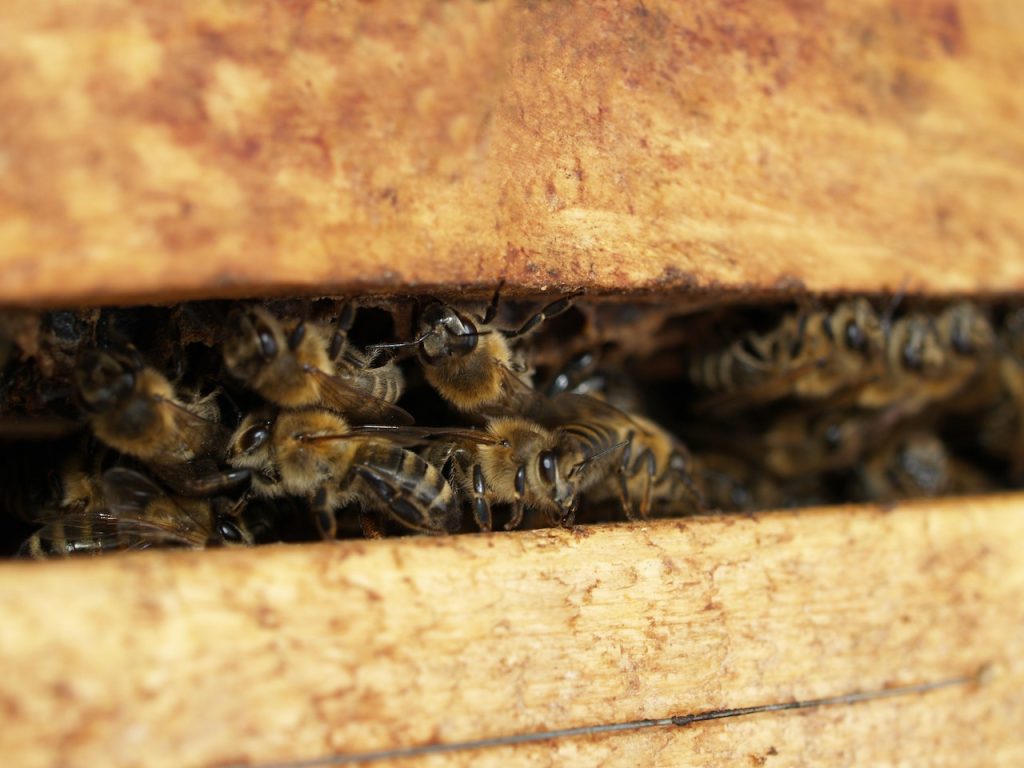Bees have favorite hemp varieties from which they collect pollen, according to a recent study that analyzed the chemical composition of pollen from four hemp varieties and documented bee abundance and diversity on the crops. Hemp pollen provides certain nutritional benefits for bees, but bees need a diverse supply of nutrients from various pollen sources to sustain their populations.
Cannabees: Bees Have Favorite Hemp Varieties, Study Finds


A new study sheds light on the exact nutrients that hemp plants provide to bees, which of them the bees prefer the most, and which hemp variety is most popular among bees.
For more news like this, download our free cannabis news app.
Researchers Observe Polen & Nutrient Preferences
Researchers narrowed their study down to four hemp varieties and observed which bee species collected pollen and what nutrients the hemp pollen provided to them. Joey, a new hemp variety developed in 2020, turned out to be the most popular among bees.
The study titled “Chemical Composition of Four Industrial Hemp (Cannabis sativa L.) Pollens and Bee Preferences” was published on July 26 in the peer-reviewed journal Insects, investigating hemp as a source of nutrients. The research involved various bee species collecting pollen, as well as flower structures such as pollen sacs and stamens under magnification.
Different Bee Types Observed in Study
The research team counted 1826 pollinating insects, which could mostly be categorized into three groups of bees: honeybees, bumblebees, and sweat bees. Sweat bees, named so because they are attracted to human sweat, were the most abundant in the study, making up 84.7% of the entire bee community on all four hemp varieties, although previous research had indicated that honeybees are more common.
Due to the difficulty in collecting pollen, scientists gathered approximately 500 grams of mature hemp flowers for each variety, placed them in paper bags, and then enclosed the bags in plastic bags, which were placed in Styrofoam containers with dry ice. The pollen samples were sent to a commercial analytical laboratory in Wisconsin. The pollen samples were analyzed for moisture levels, crude fiber, protein, ash content, mineral content, amino acids, and fatty acids.
Researchers Identified the Nutrients Provided by Pollen and Their Benefits for Bees
“Industrial hemp (Cannabis sativa L.) is cultivated on a large geographic scale in the United States, providing economic and nutritional benefits for humans,” the researchers wrote. “However, the contribution of hemp flower resources (pollen) to nutrition for bees is not well understood. We investigated the chemical composition of pollen from four industrial hemp varieties (Canda, CFX-2, Henola, and Joey) and documented bee abundance and diversity on the crops using two sampling methods.”
Each of the four hemp strains provided different proportions of nutrients, but the researchers added that bees need a more diverse supply of nutrients that goes beyond hemp or any single plant.
Results Reveal Differences in Hemp Composition
“The results revealed differences in composition among the four hemp varieties,” the researchers added. “Overall, Joey variety was most preferred by bees despite having lower levels of protein, amino acids, and saturated and monounsaturated fatty acids. Based on our findings, we concluded that industrial hemp pollen provides certain nutritional benefits for bees. However, it is important to understand that various pollen sources are needed to sustain bee populations.”
Other Bees Also Collect Pollen From Hemp
The researchers noted that other species, including long-horned bees, mining bees, and leaf-cutting bees, are also known to collect pollen from hemp plants.
Let’s remember that the importance of bees cannot be overstated: the USDA states that “three-quarters of the world’s flowering plants and about 35 percent of the world’s food crops depend on animal pollinators for reproduction.” Hemp is just one of many sources of nutrients for bees. Studies from 2019 have shown that hemp crops also attract numerous bees, which might even aid in rebuilding their populations.
—
(Featured image by Johann Piber via Pexels)
DISCLAIMER: This article was written by a third-party contributor and does not reflect the opinion of Hemp.im, its management, staff, or its associates. Please review our disclaimer for more information.
This article may include forward-looking statements. These forward-looking statements generally are identified by the words “believe,” “project,” “estimate,” “become,” “plan,” “will,” and similar expressions. These forward-looking statements involve known and unknown risks as well as uncertainties, including those discussed in the following cautionary statements and elsewhere in this article and on this site. Although the company may believe that its expectations are based on reasonable assumptions, the actual results that the company may achieve may differ materially from any forward-looking statements, which reflect the opinions of the management of the company only as of the date hereof. Additionally, please make sure to read these important disclosures.
First published in Fakty Konopne, a third-party contributor translated and adapted the article from the original. In case of discrepancy, the original will prevail.
Although we made reasonable efforts to provide accurate translations, some parts may be incorrect. Hemp.im assumes no responsibility for errors, omissions or ambiguities in the translations provided on this website. Any person or entity relying on translated content does so at their own risk. Hemp.im is not responsible for losses caused by such reliance on the accuracy or reliability of translated information. If you wish to report an error or inaccuracy in the translation, we encourage you to contact us.



Comments are closed for this post.